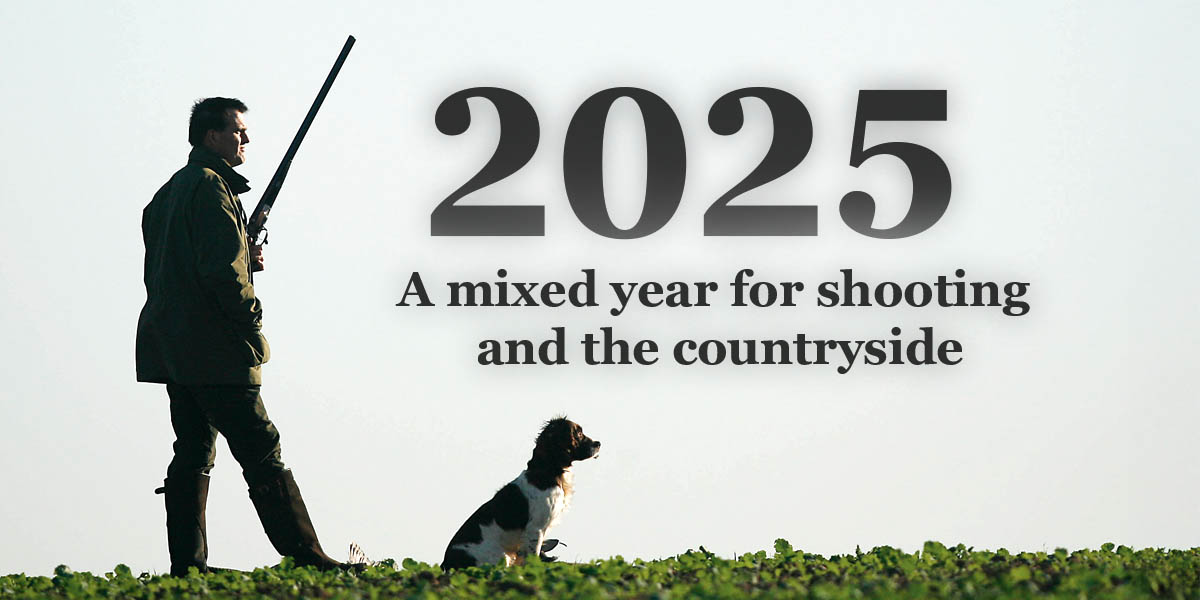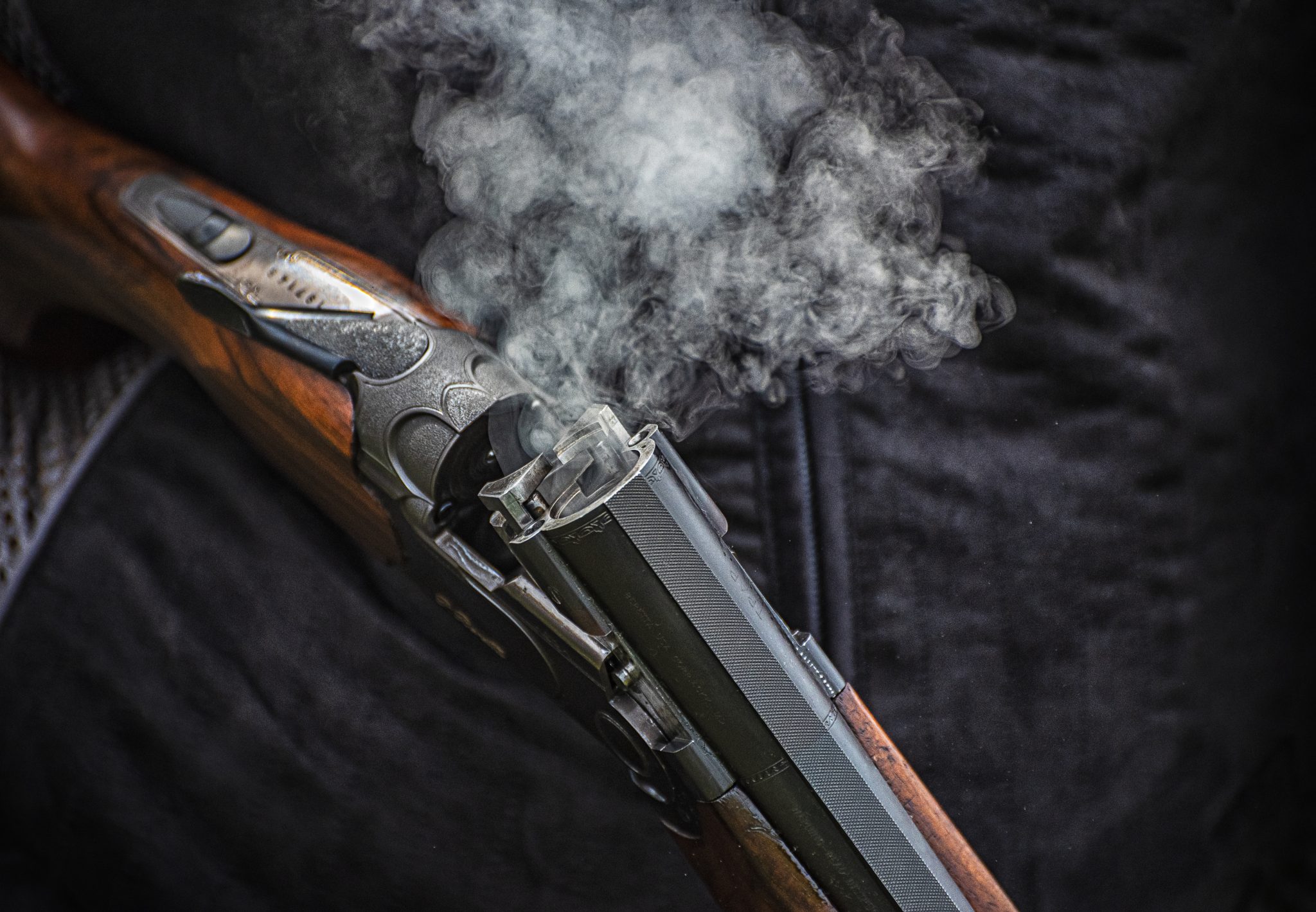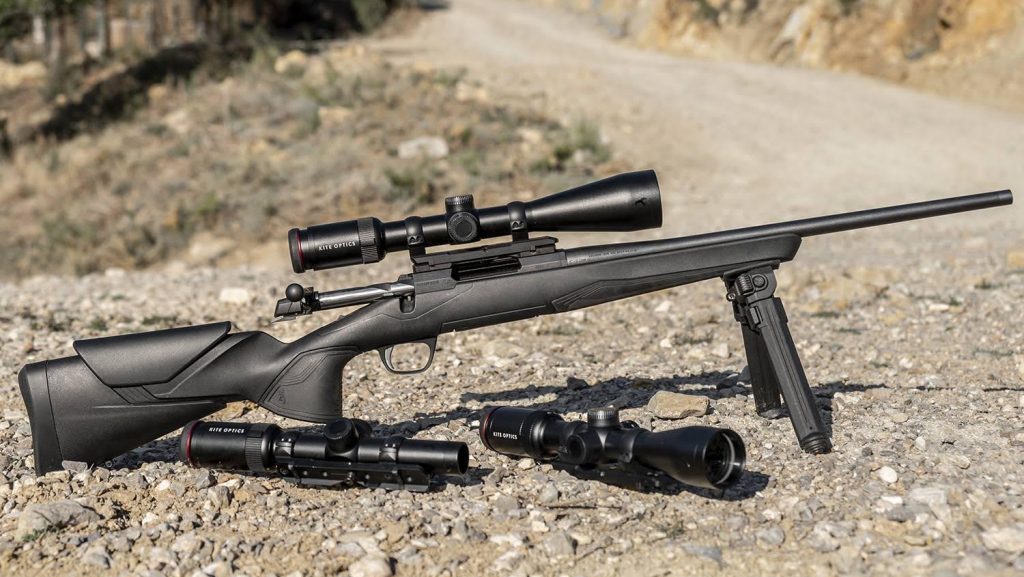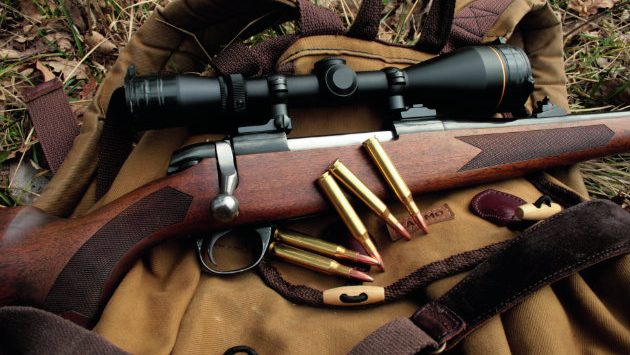Win CENS ProFlex DX5 earplugs worth £1,149 – enter here
Five rifles to tackle deer big and small
Your choice of rifle will not only come down to personal preference but will also depend on which species you plan to stalk, writes Bruce Potts.
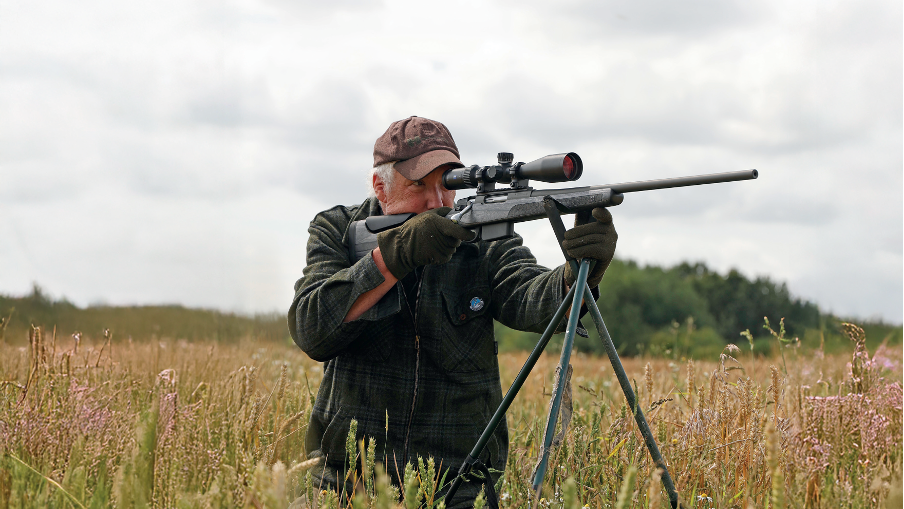
Each deer species reflects the habitat in which it evolved through its physical and behavioural characteristics. The breadth of this difference can be as wide as the gulf between moose and muntjac, so the rifle used to despatch your chosen cervid requires close consideration.
Rifle choice can be an immensely personal business, whether decided simply by your bank balance or the firearm’s suitability for the task in hand. The rifle carried for reds on the hill will likely be a different tool from that used by the lowland, woodland roe stalker but they both still need to carry out the same core functions.
I find that the most important qualities of a rifle in the UK are their propensity to repel the British weather and maintain their ability to deliver an accurate shot on target. The following are a good selection of rifles for the variety of species currently residing on these isles.
Red: Mauser M18 Pure
Stalking reds on the hill can be an arduous task. Given that reds are arguably the physically toughest of the UK’s deer species, the ideal rifle for despatching them needs to be accurate, for those longer shots across the glens, and rugged, to survive being doused in Scottish rain and dragged through the heather. The new Mauser M18 Pure is just such a rifle. It is very well priced and its Mauser pedigree ensures pinpoint accuracy.
I like the Mauser’s functional look and the name is highly representative as it is pure, stripped back and practical. The ultra-durable, ambidextrous, laminated Sporter stock handles beautifully and repels accuracy-denting moisture, while the burnished metal finishes doggedly defend the metalwork from corrosion.
The M18 action is a classic with its low, slick and typically Mauser bolt lift that avoids scope eyepiece collision. Despite the actions’ considerable length the M18 is reliable and smooth, made doubly so by the lively twin ejectors, which I think should be standard on all rifles. Mauser barrels are a cold hammer forged for longevity, and precision rifled in calibres ranging from .222 Rem right up to 9.3x62mm including the PRC rounds which are useful for testing long range reds.
Other stalker-friendly features include the entirely polymer detachable magazine, which offers a
safe and quick change. The Picatinny rail is a classic and facilitates near-universal scope mounting.
Prices start at a mere £1,311, so the rifle offers excellent value for money, especially coming from a big name like Mauser. It will certainly outlast its owner.
BLASERUK.CO.UK
Fallow: Sako 90 Peak
Fallow can be encountered in all sorts of landscapes, from large forestry blocks to wide open fields or pastures dotted with hedgerows. Because of this variety, I favour a rifle that is lightweight but still has the power and precision to knock a fallow straight down.
For me, the Sako 90 Peak with its carbon-fibre stock and stainless steel working parts has to be one of the best all-round stalking rifles on the market. It makes sense to reduce the weight you carry while stalking as if you don’t, once you’ve added the extra mass of a scope and a moderator, you can be left hauling a bit of a turkey. The serious lack of heft and top-notch build quality of the Peak make it exceptionally suitable for arduous stalking through tough mixed terrain and thus for chasing after fallow.
At 2.6 kg or 5.7lb, the Peak has been designed to be one of the lightest bolt-action rifles on the market. When combined with the new Model 90 action, which features a calibre-specific resculptured movement with a larger loading port, reliability is guaranteed. Both action and barrel are crafted from stainless steel, which alleviates any worries of longevity or rust susceptibility.
The new trigger system has five preset weights that can be quickly adjusted thanks to the easily accessible mechanism reached through the trigger-guard. This design is a total brainwave from the manufacturers and really straightforward to use. Personally, I love it. The Peak also utilises a short 20in stainless steel barrel that is fluted to reduce weight. The overall length of the rifle is also kept low at 40.25in. This relatively compact gun is great for big fallow hidden in the undergrowth where you have to wriggle your way into position for a shot.
The Sako handles spectacularly and is very naturally wielded. The carbon-fibre Sporter stock has a wonderfully grippy textured finish with a right-hand palm swell and a good comb/ cheek angle. It also has a left-hand option too. Everything about the Peak shouts real-world hunter and, at £3,985, it’s a solid investment.
Sika: Weatherby Mark V Live Wild
This exotic species from the other side of the world can be quite elusive and shy. Sika are crepuscular, meaning that they are most active around dawn and dusk, so these are the best times to head out after them. Sika are often shot at longer ranges, especially in the Wicklow Mountains and Scottish glens where good cover can be rare. This means a lighter-weight, highly totable rifle that helps to lessen fatigue on demanding days in uncompromising environments is optimal.
The Weatherby Mark V Live Wild is a rifle that certainly seems to fit the bill, especially in the flat-shooting .280 AK calibre. This rifle is based on the legendary Mark V six-lug design action made in the USA. As such, it is as robust a unit as you could hope to find, and at 54 degrees, it offers the lowest bolt lift of any rifle in its class. This makes the whole shooting experience ultra-slick, which is handy as a quick second shot for sika can be really advantageous.
The barrel is fairly long at 24in, but thanks to the handsome fluting it still doesn’t weigh much and guarantees sub-MOA groups at 100 yards.
The adjustable TriggerTech trigger has an adjustable weight range from 2.5lb to 5lb and gives the stalker a perfect feel for the sear release. The weight of the whole unit has been kept right down through the optimised combination of skeletonised bolt handle, fluted bolt/barrel, and a carbon grey cerakote housing. This concoction also offers full protection from the elements.
The sublime handling is partly due to the feather-light 5.6lb weight but is also helped by the Live Wild’s polymer stock with flat-bottomed fore-end, ambidextrous palm swells and aluminium pillar construction finished with a hand-painted sponge pattern. It’s a rifle you can confidently tackle sika with at long range. With a price of only £1,739, in my view, it’s a steal.
Roe: ATA Turqua
I have probably used every type of bolt-action, single-shot and straight-pull rifle under the sun for roe stalking, and truthfully they will all get the job done, but I always like an underdog and a bargain. When I have tested the new ATA Turqua rifles, they have really out-shot their price point, thus offering a serious and viable budget option.
Key features of this model include a sliding three position safety, two-stage adjustable trigger, a barrel guaranteed to shoot sub-MOA for three shots at 100 yards and a grey laminate thumbhole stock. The whole operation feels smooth, which I put down to the low bolt lift of 60 degrees. The low bolt lift is facilitated by the three-lug locking system and I like the powerful pivoting extractor claw and energetic plunger ejector system similar to the one seen in the M16. Stalkers will appreciate that the Turqua comes with both a three- and five-shot single stack polymer magazine. This is a thoughtful addition and both are easily removed with the forward-mounted release lever.
The barrel is button rifled and available in .308 Win, .243 Win and 6.5 Creedmoor calibres with barrels of 24in, 22in or a 20in option perfect for woodland roe.
The Turqua’s weather-resistant laminate stock combines comfort, adjustability and great handling, which certainly complements the astonishing accuracy from these rifles. When tested, it consumed a range of ammunition without issue and turned in sub-MOA groups out to 200 yards.
If you are on a budget, the ATA rifles will not disappoint. Prices range for the basic Sporter model with walnut stock or synthetic models at £674.99 and £599.99 respectively, while this laminate thumbhole version retails at £934.99. There is a version with a walnut stock and an adjustable cheekpiece that goes for £734.99.
Muntjac and Chinese water deer: Browning X-Bolt 2
An agile, lightweight rifle is desirable for muntjac and Chinese water deer (CWD) as they can be fidgety deer seemingly always on the move. Whereas muntjac tend to be closer shots, CWD are often glimpsed across long fields, so a rifle capable of manoeuvrability and crisp accuracy is highly desirable. A rifle that fits the bill is the new X-Bolt 2 from Browning. In fact, I had a perfect right-and-left when testing this rifle, yielding a nice eating buck and a monster gold medal plus. Proof, if proof were needed, as to its credentials as a stalking rifle.
The Varitech stocked version offers great flexibility to custom configure the stock and even offers exchangeable pistol grip sections, providing super handling and hold. Its polymer black profile, with cheekpiece and length of pull adjustments, also achieves a perfect scope-to-eye alignment while still providing a rigid, lightweight, weather-beating stock.
The X-Bolt 2 action delivers an ultra-low bolt lift and new fluted profile to reduce weight and eliminate a chance of binding during operation, with optional exchangeable bolt knobs as well. I like the new DLX trigger-unit with adjustable weights from 800g to 1.3kg. It possesses a much better feel than previous triggers, while the conveniently placed silent tang safety catch is perfect for when a CWD appears from nowhere.
The Nordic version’s 20in barrel makes it conducive to stealthy, agile stalking, and I have found Browning barrels are rarely bullet-fussy, either – another stalker-friendly bonus. And at £1,179, the X-Bolt 2 Nordic Varitech represents excellent value.
Related Articles
Get the latest news delivered direct to your door
Subscribe to Shooting Times & Country
Discover the ultimate companion for field sports enthusiasts with Shooting Times & Country Magazine, the UK’s leading weekly publication that has been at the forefront of shooting culture since 1882. Subscribers gain access to expert tips, comprehensive gear reviews, seasonal advice and a vibrant community of like-minded shooters.
Save on shop price when you subscribe with weekly issues featuring in-depth articles on gundog training, exclusive member offers and access to the digital back issue library. A Shooting Times & Country subscription is more than a magazine, don’t just read about the countryside; immerse yourself in its most authoritative and engaging publication.



